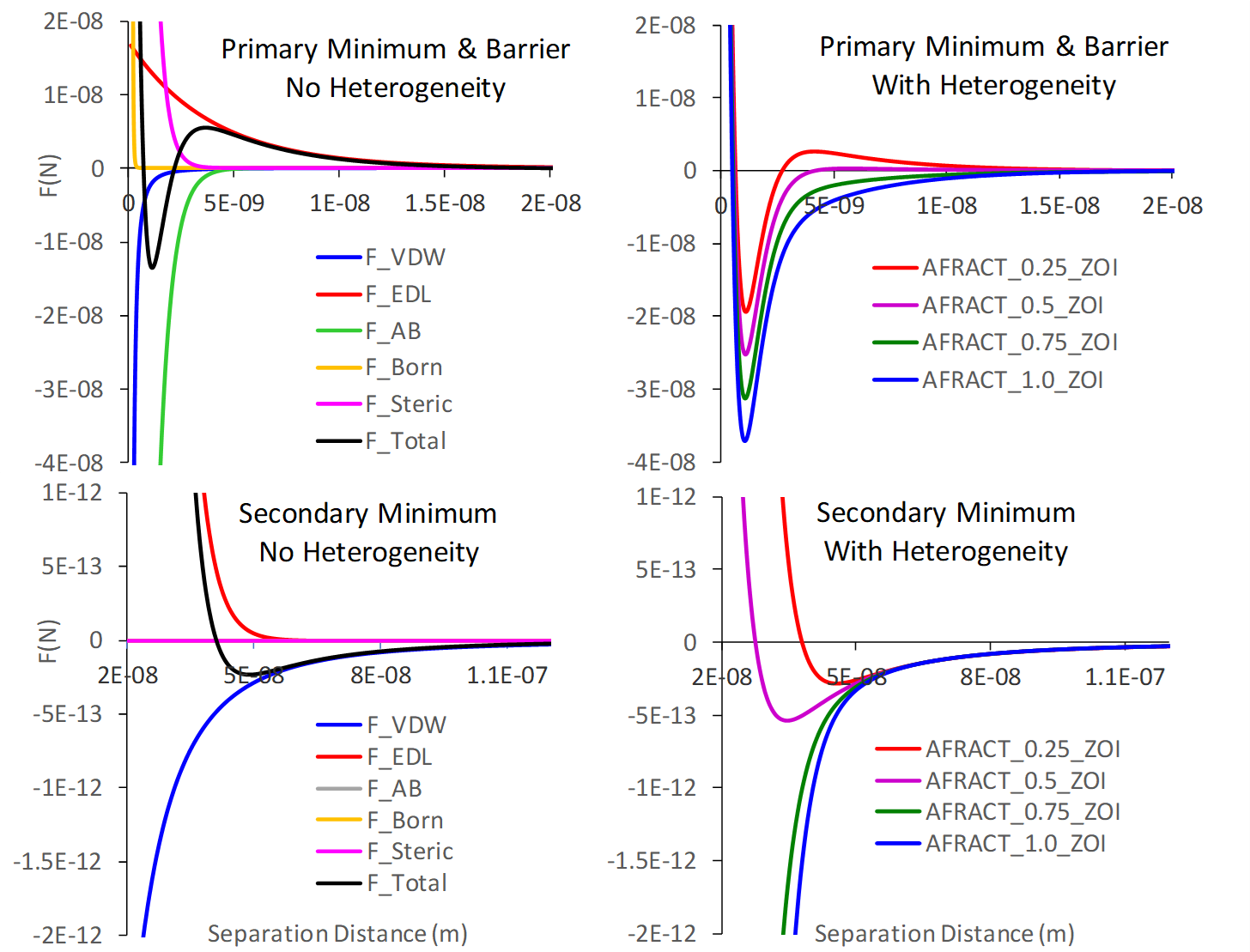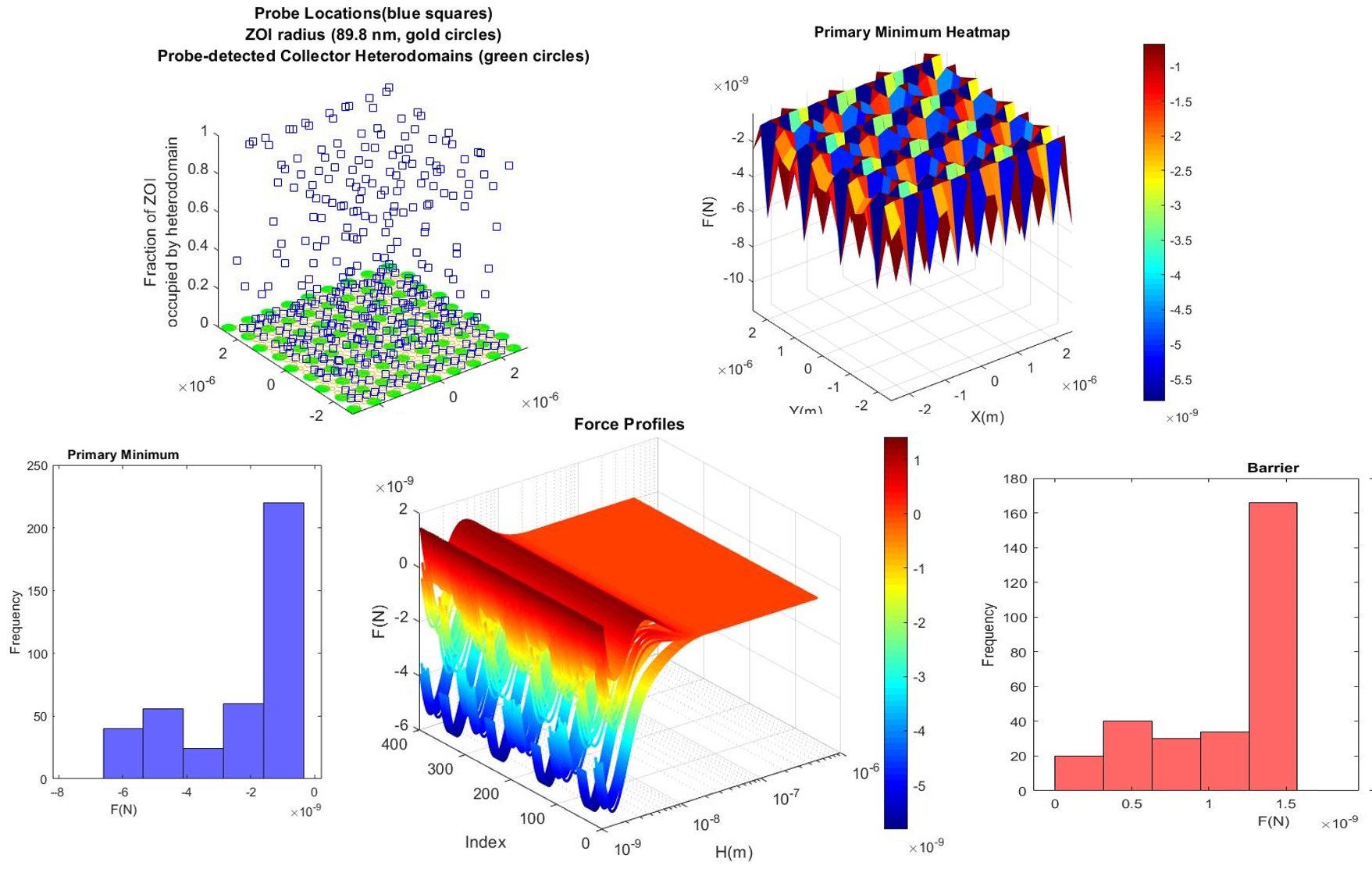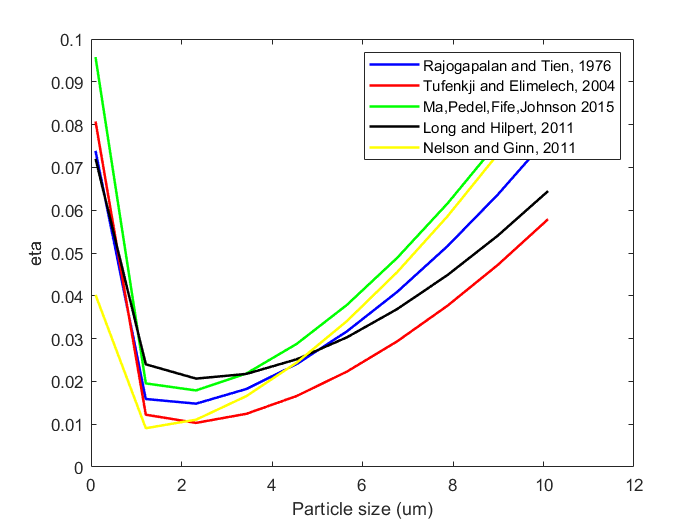Particle Trajectory and Surface Interaction Software
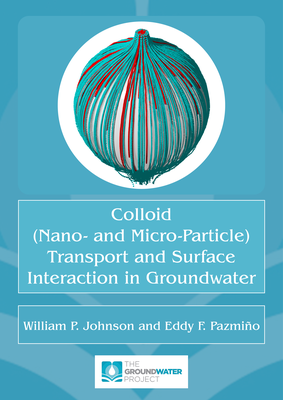
Parti-Suite Software for Mechanistic Nano- to Micro-Particle Transport
Downloads
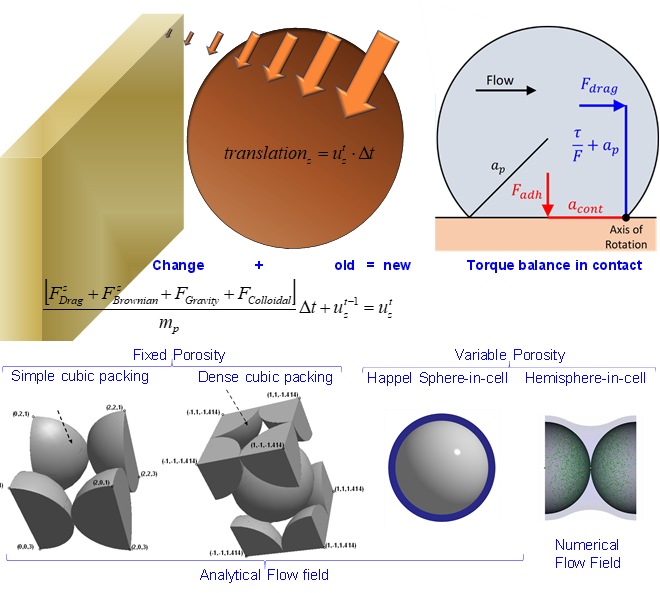
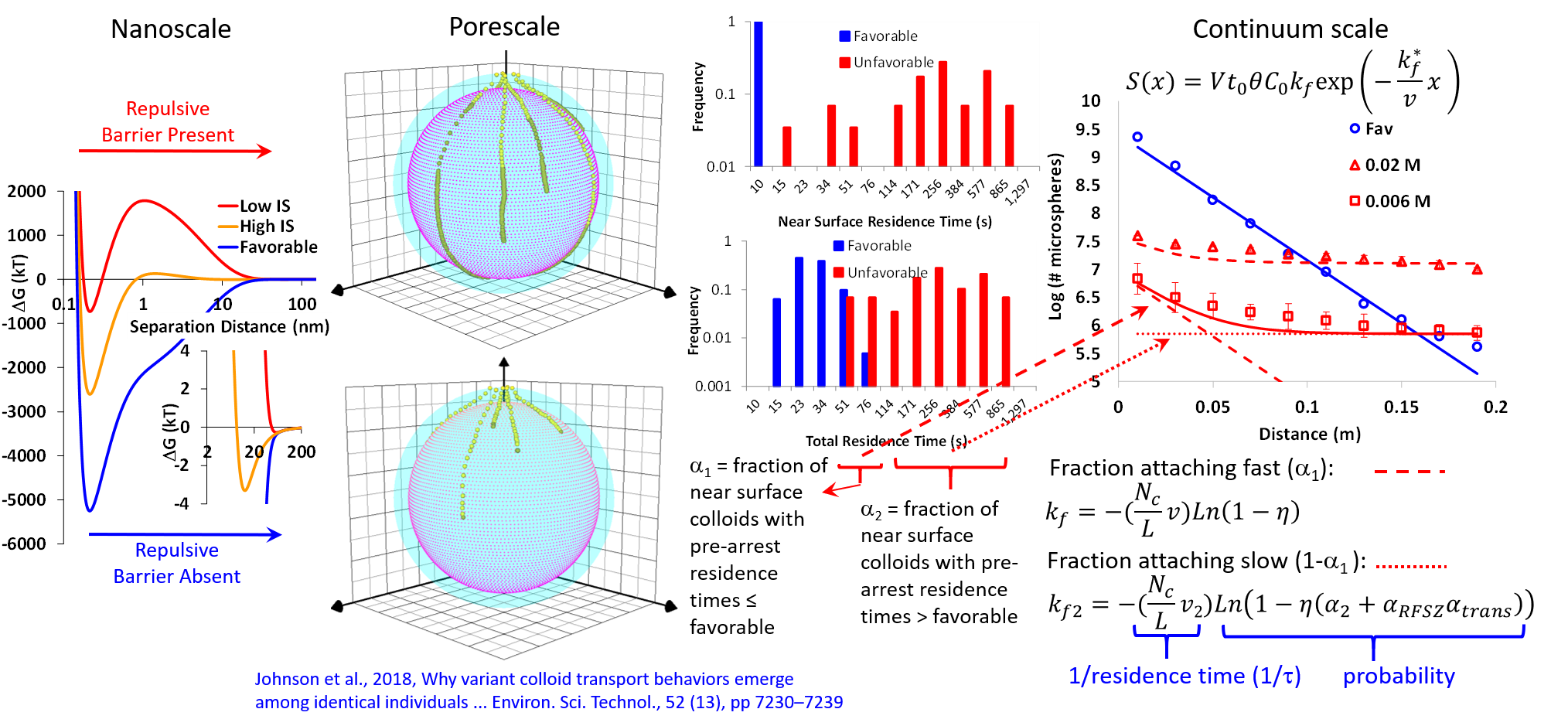
By downloading Parti-Suite software you are acknowledging your use for academic purposes. We ask you to send an email providing your affiliation to allow us to notify you of updates. We also ask that you refer interested users to download from this website so that versions contain updates. Please contact us with your questions.
Background and How-To Videos
Parti-Suite Overview
xDLVO
Traj-Hap Gui Introduction
Traj-Hap Favorable
Traj-Hap Collector Efficiencies
Traj-Hap Unfavorable
Traj-Hap Perturbation
UpscaleBackground
Upscale Continuum How To
Simulations from Nano- to Macro-scales
Continuum scale advection-dispersion-reaction transport models for simulation of solute and colloid transport in porous media are widely available; e.g., Hydrus (Simunek et al., 2009), MT3D (Zheng, 1992) and others. The models employ rate coefficients for transfer of solute or colloid between domains; e.g., between water and sediment.
Our software provides the ability to mechanistically predict the rate coefficients for continuum scale simulations like those cited above. In contrast to available empirical relationship between ionic strength and kf (https://areeweb.polito.it/ricerca/groundwater/software/mnms/), our software mechanistically predicts rate coefficients under both favorable (repulsion absent) and unfavorable (repulsion present) conditions. The software performs pore scale mechanistic Lagrangian trajectory simulations using a full force and torque balance, as described in our publications and supporting information (e.g., Ron et al., 2019; VanNess et al., 2019; Rasmuson et al., 2019). The softwares also mechanistically upscale the pore scale trajectory information to rate coefficients for continuum scale simulations (Johnson et al., 2018), and produce macroscale breakthrough-elution concentration histories as well as profiles of retained colloid concentrations as a function of distance from source. Whereas other continuum scale models exist such as those cited above, our software provides the option for implicit versus explicit simulation of the near-surface fluid domain, which influences the distribution of retained colloids as a function of distance from their source (Johnson et al., 2018).
A major challenge to prediction of colloid retention and reentrainment rate coefficients under environmental conditions has been the difficulty in accounting for nanoscale heterogeneity that is inferred to allow colloid retention despite bulk repulsion with like-charged porous media surfaces (Elimelech and O�Melia, 1990; Johnson et al., 2018). Like charges among the colloid and porous media surfaces (e.g., both positive or both negative), considered typical of many environmental and biological contexts, yield the so-called unfavorable conditions for colloid attachment.

Successful incorporation of discrete representative nanoscale heterogeneity (DRNH) to predict colloid retention and reentrainment in unfavorable porous media has recently been demonstrated (Duffadar et al., 2009; Bendersky et al., 2015; Pazmino et al., 2014; Trauscht et al., 2015; Shave et al., 2018; Ron et al., 2019; VanNess et al., 2019; Rasmuson et al., 2019). Our softwares incorporate DRNH for mechanistic prediction of rate coefficients for colloid retention and reentrainment under unfavorable conditions. Hyper-exponential and non-monotonic distributions of colloids from their sources emerge from upscaling of the trajectory information (Johnson et al., 2018), and this upscaling is also provided in the software.
We hope you enjoy using, and obtain insights from, this software. The Software Manuals provided with the softwares describe in greater detail the components and their associated output files.
References cited above that are not provided on our Publications Page:
Bendersky, M.; Santore, M. M.; Davis, J. M. (2015). �Statistically-based DLVO approach to the dynamic interaction of colloidal microparticles with topographically and chemically heterogeneous collectors�. Journal of colloid and interface science, 449: 443-451.
Bradford, S. A.; Yates, S. R.; Bettahar, M.; Simunek, J. (2002). "Physical factors affecting the transport and fate of colloids in saturated porous media". Water Resources Research, 38 (12): 63-1-63�12. doi:10.1029/2002WR001340
Duffadar, R.; Kalasin, S.; Davis, J. M.; Santore, M. M. (2009). �The impact of nanoscale chemical features on micron-scale adhesion: Crossover from heterogeneity-dominated to mean-field behavior�. Journal of colloid and interface science, 337 (2): 396-407.
Elimelech, M.; O�Melia, C. R. (1990). "Kinetics of deposition of colloidal particles in porous media". Environmental Science & Technology, 24 (10): 1528�1536. doi:10.1021/es00080a012
Long, W.; Hilpert, M. (2009). �A correlation for the collector efficiency of Brownian particles in clean-bed filtration in sphere packings by a Lattice-Boltzmann method�. Environmental science & technology, 43 (12): 4419-4424.
Nelson, K. E.; Ginn, T. R. (2011). �New collector efficiency equation for colloid filtration in both natural and engineered flow conditions�. Water Resources Research, 47 (5).
Rajagopalan, R.; Tien, C. (1976). "Trajectory analysis of deep-bed filtration with the sphere-in-cell porous media model". AIChE Journal, 22 (3): 523�533. doi:10.1002/aic.690220316.
Shave, M. K.; Kalasin, S.; Ying, E.; Santore, M. M. (2018). �Nanoscale Functionalized Particles with Rotation-Controlled Capture in Shear Flow�. ACS applied materials & interfaces, 10 (34): 29058-29068.
�imunek, J.; �ejna, M.; Saito, H.; Sakai, M.; van Genuchten, M. T. (2009). �The HYDRUS-1D a software package for simulating water, heat and solute movement in one-dimensional variably-saturated media, Version 4.08�. Department of Environmental Sciences, University of California Riverside, Riverside, CA, USA.
Tufenkji, N.; Elimelech, M. (2004). "Correlation Equation for Predicting Single-Collector Efficiency in Physicochemical Filtration in Saturated Porous Media". Environmental Science and Technology, 38 (2): 529�536. doi:10.1021/es034049r.
Yao, K. M.; Habibian, M. T.; O'Melia, C. R. (1971). �Water and waste water filtration. Concepts and applications�. Environmental science & technology, 5 (11): 1105-1112.
Zheng, C. (1992). MT3D: A modular three-dimensional transport model for simulation of advection, dispersion and chemical reactions of contaminants in groundwater systems. SS Papadopulos & Associates.


